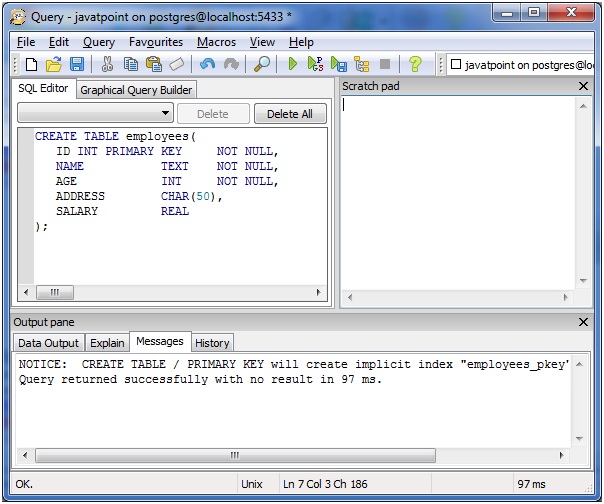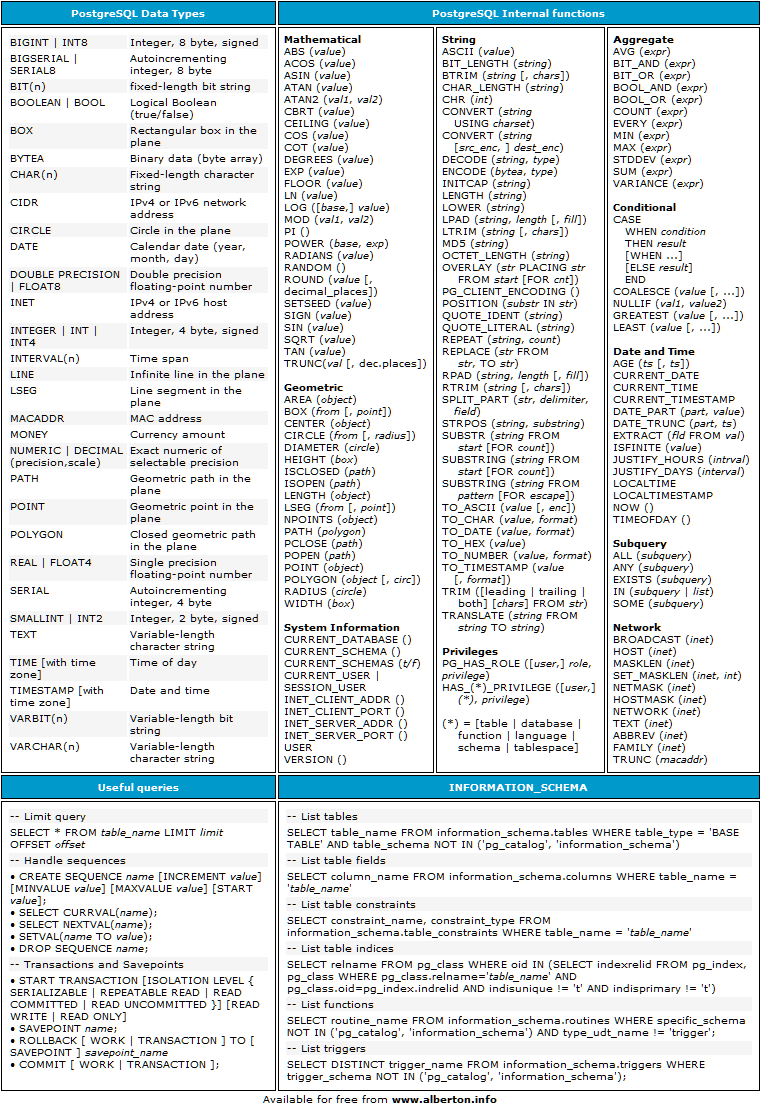

This will list the columns, indexes, and any references to other tables. link to other Data School pages/images where appropriate (joins. To see more information about a particular table, you can use the describe table command: d tablename. WHEN t.typname = 'numeric' THEN (((f.atttypmod - 4) > 16) & 65535) Answer the question simply (provide sql query when appropriate) Define example scenario we will be using (use a familiar dataset: facebook friends, Amazon store, Uber riders, etc) Provide a small table.

WHEN f.atttypmod >= 0 AND t.typname 'numeric'THEN (f.atttypmod - 4) -first 4 bytes are for storing actual length of data Pg_catalog.format_type(f.atttypid,f.atttypmod) AS data_type_full, Is there a PostgreSQL query or command that returns the field names and field types of a query, table or view E.g. It also filters out columns that have been dropped (which still exist in the database). It also includes constraint names, inheritance information, and a data types broken into it's constituent parts (type, length, precision, scale). To improve on the other answer's SQL query (which is great!), here is a revised query. The first is Schema and the second is the table name. Be sure to change out the %s's in the query. It's pretty complex but it does show you the power and flexibility of the PostgreSQL system catalog and should get you on your way to pg_catalog mastery -).

LEFT JOIN pg_class AS g ON p.confrelid = g.oidĪND n.nspname = '%s' - Replace with Schema nameĪND c.relname = '%s' - Replace with table name LEFT JOIN pg_constraint p ON p.conrelid = c.oid AND f.attnum = ANY (p.conkey) LEFT JOIN pg_namespace n ON n.oid = c.relnamespace To determine the size of a Postgres database table from the command line, log in to your server using SSH and access. LEFT JOIN pg_attrdef d ON d.adrelid = c.oid AND d.adnum = f.attnum Determining The Size of PostgreSQL Tables. Pg_catalog.format_type(f.atttypid,f.atttypmod) AS type, Here's a complex query that does that: SELECT If you launch psql -E, and run '\d table_name` you will see that all meta commands are just wraps for select queries.If you want to obtain it from query instead of psql, you can query the catalog schema. Syntax and Parameters Below is the syntax of show tables in PostgreSQL. To show tables from the database, we need to connect to the specific database from which we need to show the tables. The sudo command allows you to run commands as another user. This query will show only tables in same manner as \d meta-command.īTW I took the query from this metacommand. In MySQL, we can list all tables from the database using the show tables in PostgreSQL, we can list all the database tables using the \dt command. To access the psql terminal as user postgres, run: sudo -u postgres psql. Join pg_catalog.pg_class c on a.attrelid = c.oid You can verify if your table has been created successfully using d command, which will be used to list down all the tables in an attached database. WHERE d.adrelid = a.attrelid AND d.adnum = a.attnum AND a.atthasdef) as "Modifiers" (SELECT substring(pg_catalog.pg_get_expr(d.adbin, d.adrelid) for 128)

T=# SELECT a.attname as "Column",pg_catalog.format_type(a.atttypid, a.atttypmod) as "Type", Now regarding the queries in comments, if you modify them a little: t=# \d t24 You should use pg_dump -s, not psql: bash>pg_dump -t t24 -s


 0 kommentar(er)
0 kommentar(er)
